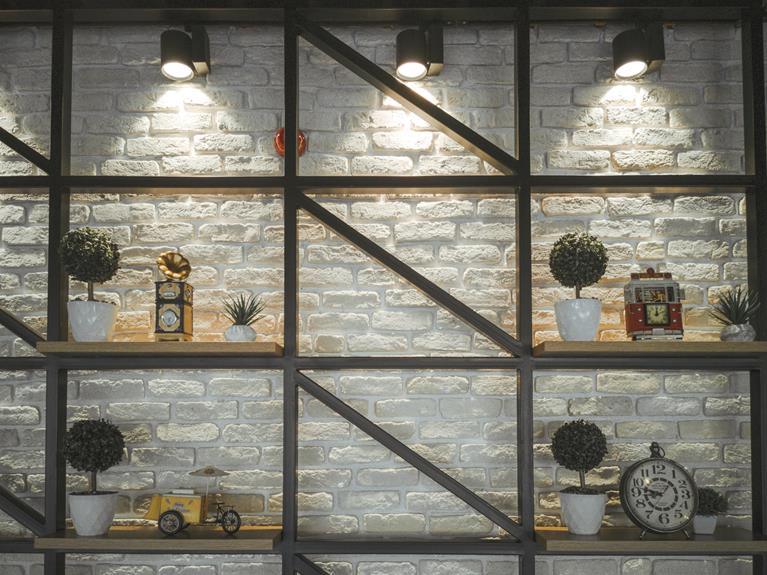
Opting for natural light in your home can bring forth a welcoming ambiance, vibrant colors, and cost-saving benefits while linking to better sleep and less environmental impact. However, artificial light offers consistent and customizable illumination to areas natural light may not reach, enhancing the aesthetic appeal with flexibility. Balancing both types optimizes your environment, impacting mood, productivity, and energy efficiency, where combining the two can maximize benefits. Further insights await on how these options could transform your living space.
Advantages of Natural Light
When considering home illumination, natural light offers numerous advantages that can enhance your living space in various ways. Firstly, natural light creates a welcoming and vibrant atmosphere in your home. The bright and warm glow of sunlight can uplift your mood, making your space feel more inviting and comfortable. Additionally, natural light helps to showcase the true colors of your decor and furnishings, allowing them to appear more vibrant and appealing.
Furthermore, natural light can save you money on energy bills. By utilizing sunlight during the day, you can reduce the need for artificial lighting, lowering your electricity consumption. This eco-friendly approach not only benefits your wallet but also helps to reduce your carbon footprint.
Moreover, exposure to natural light has been linked to improved sleep quality and overall well-being. Sunlight regulates your circadian rhythm, promoting better sleep patterns and boosting your mood. By maximizing natural light in your home, you can create a healthier and more pleasant living environment for yourself and your family.
Benefits of Artificial Light
To fully illuminate your living space, artificial light provides practical benefits that complement the advantages of natural light. Artificial light sources, such as LED bulbs or fluorescent lights, offer consistent and reliable illumination regardless of external factors like weather or time of day. These lighting options allow you to control the intensity and color temperature to suit different activities, creating a customized ambiance in each room. Additionally, artificial light can be strategically placed to fill in areas where natural light may not reach, ensuring a well-lit environment throughout your home.
Moreover, artificial light fixtures come in various designs and styles, allowing you to enhance the aesthetic appeal of your living space while brightening it. Whether you prefer sleek modern lighting or elegant traditional fixtures, there are countless options to match your decor and personal taste. Furthermore, artificial light can be easily adjusted with dimmers or smart lighting systems, offering convenience and flexibility in managing your lighting preferences. Overall, the benefits of artificial light in home illumination are undeniable, providing practicality, customization, and aesthetic enhancement to your living environment.
Impact on Mood and Productivity
Artificial light sources play a significant role in influencing both your mood and productivity within your home environment. The type of artificial lighting you choose can have a direct impact on how you feel and how well you can focus on tasks. Bright, cool-toned lights, such as daylight-mimicking LEDs, can help boost alertness and enhance productivity during the day. On the other hand, warm-toned lights, like soft white bulbs, are better suited for promoting relaxation and a cozy atmosphere in the evenings.
Research suggests that exposure to natural light can positively affect your mood and overall well-being. However, when natural light is limited, especially during winter or in spaces with few windows, artificial lighting becomes crucial. By strategically placing artificial light sources throughout your home, you can create different atmospheres for various activities. For example, adjustable desk lamps can provide focused lighting for work tasks, while dimmable overhead lights can help create a calming ambiance for winding down in the evenings.
Balancing the use of artificial light with natural light can help optimize your home environment for both mood enhancement and increased productivity.
Energy Efficiency Comparison
Comparing the energy efficiency of natural and artificial light sources can provide valuable insights into optimizing your home's lighting setup. Natural light, such as sunlight, is the most energy-efficient option as it requires no electricity to produce. By strategically placing windows, skylights, or using light tubes, you can maximize the amount of natural light in your home, reducing the need for artificial lighting during the day.
On the other hand, artificial lights vary in energy efficiency depending on the type of bulb used. LED bulbs are the most energy-efficient artificial lighting option, consuming significantly less electricity compared to incandescent or fluorescent bulbs. By replacing traditional bulbs with LEDs, you can lower your energy consumption and reduce electricity costs.
When considering energy efficiency in home illumination, a combination of natural and LED lighting can offer the best of both worlds. Utilizing natural light during the day and switching to LED lights when needed can help you create a well-lit and energy-efficient living space.
Design Considerations
When planning the lighting design for your home, consider how different light sources and fixtures can enhance the atmosphere and functionality of each space. Natural light brings a sense of warmth and vitality, making rooms feel inviting and spacious. Strategically placing windows, skylights, or glass doors can create a connection to the outdoors and improve the overall ambiance.
On the other hand, artificial light offers flexibility and control over illumination levels. Use a combination of ambient, task, and accent lighting to tailor the lighting to specific activities and moods. Pendant lights, sconces, and recessed lighting can highlight architectural features or artwork, adding visual interest to your home.
Additionally, consider the color temperature of your light sources to evoke different feelings—warmer tones promote relaxation, while cooler tones enhance focus. Ultimately, a well-thought-out lighting design can transform your living spaces into functional, cozy retreats that cater to your lifestyle and preferences.




